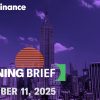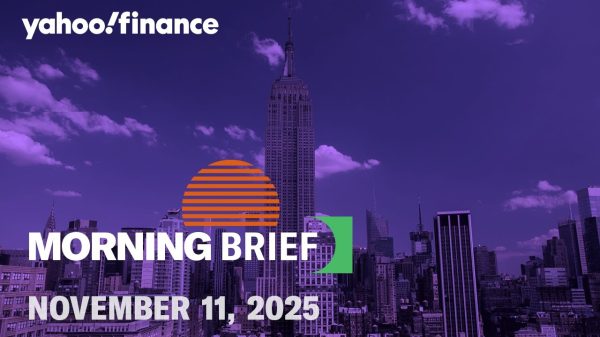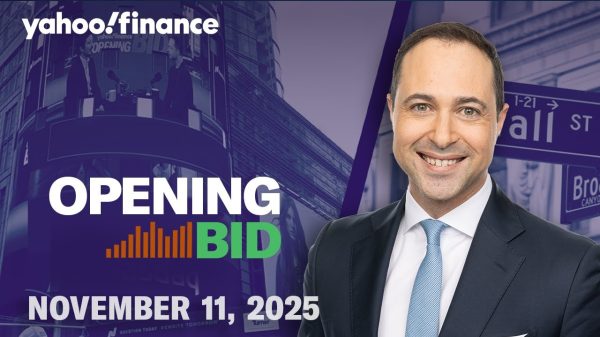Dear International Growth Fund Shareholder:
Baron International Growth Fund® (BINIX, the Fund) gained 8.07% (Institutional Shares) during the third quarter of 2024, while its primary benchmark index, the MSCI ACWI ex USA Index (the Benchmark), was up 8.06%. The MSCI ACWI ex USA IMI Growth Index (the Proxy Benchmark) gained 7.13% for the quarter. The Fund performed in line with the Benchmark and outperformed the Proxy Benchmark during a solid quarter for global equity returns.
While the seminal event during the third quarter was the U.S. Federal Reserve’s (the Fed) 50 basis point rate cut, marking the beginning of a long- awaited easing cycle, we would argue that the nearly simultaneous emergence of two additional catalysts have markedly increased the likelihood that we have now entered a sustainable and mean-reverting outperformance phase for international equities. The first was Japan’s exit from zero interest rate policy, signaling interest rate and monetary policy normalization and a bottom to the 13-year bear market in the Japanese yen, which we believe will likely provoke a longer-term inflection point in global capital flows away from over-owned U.S. assets and in the direction of non-U.S. bonds and equities. Second was the comprehensive and unexpected pivot in monetary and fiscal stimulus intensity announced in late September by Chinese authorities, finally projecting a sense of urgency and commitment regarding economic recovery and property market stabilization, while clearly prioritizing the execution of pro-growth policy initiatives. In response to the above, international and emerging markets equities both markedly outperformed the S&P 500 (SP500, SPX) Index during the third quarter. We remain optimistic that despite the recent rally, non-U.S. equities offer an attractive long-term entry point, with valuations and relative earnings expectations still near multi-decade lows and investor skepticism remaining quite high. As always, we are confident that our diversified portfolio of well-positioned and well-managed companies can execute on their potential over the coming years.
Table I. Performance Annualized for periods ended September 30, 2024
| Baron International Growth Fund Retail Shares1,2 | Baron International Growth Fund Institutional Shares1,2,3 | MSCI ACWI ex USA Index1 | MSCI ACWI ex USA IMI Growth Index1 | |||||
|---|---|---|---|---|---|---|---|---|
| Three Months4 | 8.02% | 8.07% | 8.06% | 7.13% | ||||
| Nine Months4 | 10.69% | 10.90% | 14.21% | 13.67% | ||||
| One Year | 19.20% | 19.53% | 25.35% | 26.16% | ||||
| Three Years | (4.87)% | (4.63)% | 4.14% | 0.43% | ||||
| Five Years | 6.09% | 6.35% | 7.59% | 7.15% | ||||
| Ten Years | 6.19% | 6.45% | 5.22% | 5.98% | ||||
| Fifteen Years | 7.27% | 7.54% | 5.49% | 6.32% | ||||
| Since Inception (December 31, 2008) | 8.94% | 9.21% | 7.31% | 7.99% |
|
Performance listed in the above table is net of annual operating expenses. The gross annual expense ratio for the Retail Shares and Institutional Shares as of December 31, 2023 was 1.26% and 0.98%, but the net annual expense ratio was 1.20% and 0.95% (net of the Adviser’s fee waivers), respectively. The performance data quoted represents past performance. Past performance is no guarantee of future results. The investment return and principal value of an investment will fluctuate; an investor’s shares, when redeemed, may be worth more or less than their original cost. The Adviser waives and/or reimburses certain Fund expenses pursuant to a contract expiring on August 29, 2035, unless renewed for another 11-year term and the Fund’s transfer agency expenses may be reduced by expense offsets from an unaffiliated transfer agent, without which performance would have been lower. Current performance may be lower or higher than the performance data quoted. For performance information current to the most recent month end, visit BaronCapitalGroup.com or call 1-800-99-BARON. (1)The MSCI ACWI ex USA Index Net (‘USD’) is designed to measure the equity market performance of large and mid cap securities across 22 of 23 Developed Markets countries (excluding the US) and 24 Emerging Markets countries. The MSCI ACWI ex USA IMI Growth Index Net (‘USD’) is designed to measure the performance of large, mid and small cap growth securities exhibiting overall growth style characteristics across 22 of 23 Developed Markets countries (excluding the United States) and 24 Emerging Markets countries. MSCI is the source and owner of the trademarks, service marks and copyrights related to the MSCI Indexes. The indexes and the Fund include reinvestment of dividends, net of foreign withholding taxes, which positively impact the performance results. The indexes are unmanaged. Index performance is not Fund performance. Investors cannot invest directly in an index.(2)The performance data does not reflect the deduction of taxes that a shareholder would pay on Fund distributions or redemption of Fund shares.(3)Performance for the Institutional Shares prior to 5/29/2009 is based on the performance of the Retail Shares, which have a distribution fee. The Institutional Shares do not have a distribution fee. If the annual returns for the Institutional Shares prior to 5/29/2009 did not reflect this fee, the returns would be higher.(4)Not annualized. |
In the third quarter of 2024, we performed in line with the Benchmark, while outperforming our all-cap growth-oriented Proxy Benchmark. By sector or theme, solid stock selection across multiple themes within Industrials and Materials were the largest contributors to relative performance this quarter. Notable outperformers were HD Korea Shipbuilding & Offshore Engineering Co., Ltd., Techtronic Industries Co. Ltd. (OTCQX:TTNDY), and HD Hyundai Heavy Industries Co., Ltd., as part of our sustainability/ESG theme, Agnico Eagle Mines Limited (AEM) and Lynas Rare Earths Limited (OTCPK:LYSCF) within global security, and DSM-Firmenich AG (OTC:KDSKF), Symrise AG (OTCPK:SYIEF), and Linde plc (LIN) across our best-in-class/high quality growth theme. In addition, solid stock selection in the Consumer Discretionary sector, primarily driven by our investment in Trent Limited, as part of our EM consumer theme, also bolstered relative results. Broadly offsetting the above was negative allocation effect and adverse stock selection in the Financials sector, partially attributable to our exposure to Japanese banks (Sumitomo Mitsui Financial Group, Inc. and Mitsubishi UFJ Financial Group, Inc.) that retraced prior period gains owing to a decline in Japanese long-term bond yields and an appreciation of the yen, which create headwinds to the banks’ earnings outlook. In addition, adverse stock selection in the Consumer Staples sector, owing to select investments in our EM consumer theme (Dino Polska S.A. and Godrej Consumer Products Limited), also weighed on relative results.
From a country perspective overall, positive stock selection effect was offset by adverse allocation. Solid stock selection in the Netherlands, Korea, and India were the largest contributors to relative performance this quarter. Our active exposure to the U.S., through investments in Agilent Technologies, Inc. (A) and Arch Capital Group Ltd. (ACGL), together with our underweight positioning in Taiwan, also bolstered relative results. Mostly offsetting the above was poor stock selection effect in Japan, Israel, Brazil, and the U.K., together with adverse allocation and stock selection in Germany and Switzerland.
Top Contributors to Performance
Table II. Top contributors to performance for the quarter ended September 30, 2024
| Contribution to Return | |
|---|---|
| Trent Limited | 0.62% |
| argenx SE (ARGX) | 0.58 |
| HD Korea Shipbuilding & Offshore Engineering Co., Ltd. | 0.49 |
| DSM-Firmenich AG | 0.44 |
| Bharti Airtel Limited | 0.39 |
Trent Limited is a leading retailer in India that sells direct-to-consumer private label apparel through its proprietary retail network. Shares were up on better-than-expected quarterly sales performance as well as the continued expansion of its Zudio value fashion franchise. We believe the company will generate over 25% revenue growth in the near-to-medium term, driven by same-store-sales growth and outlet expansion. In addition, we believe improved operating leverage and a growing franchisee mix will lead to increased profitability and return on capital, driving an EBITDA CAGR of more than 30% over the next three to five years.
Argenx SE is a biotechnology company focused on autoimmune disorders. Shares increased on positive sentiment around Vyvgart’s second commercial indication in rare nerve disorder chronic inflammatory demyelinating polyneuropathy, which was approved in late June and should be a strong launch into a large addressable market, in our opinion. Shares also benefited after competitor data from Amgen’s (AMGN) Uplinza failed to impress in myasthenia gravis, Vyvgart’s current core indication. Upcoming clinical catalysts should continue to drive long term growth, including readouts in myositis, Sjogren’s syndrome, multifocal motor neuropathy, and the subcutaneous formulation launch.
HD Korea Shipbuilding & Offshore Engineering Co., Ltd. is the holding company of Hyundai Heavy, the largest global shipbuilder based on orderbook size and the global leader in high-end vessels including liquified natural gas (‘LNG’)-powered ships. Shares contributed on stronger-than- expected quarterly results at its subsidiaries, including margin growth enhanced by higher pricing and lower raw materials costs and strong year-to-date newbuild ship order demand and pricing. Korean shipbuilders have an oligopoly in LNG carrier shipbuilding, LNG dual-fueled container ships, and tankers. Tighter carbon emissions regulations, to be fully adopted by the International Maritime Organization (‘IMO’) by 2030, should drive demand for LNG dual-fueled ships as well as carbon-free ammonia-fueled ships. We expect a structural shortage of compliant ships as the IMO deadline nears, which should benefit HD Korea Shipbuilding given its dominance in this industry.
Top Detractors from Performance
Table III. Top detractors from performance for the quarter ended September 30, 2024
| Contribution to Return | |
|---|---|
| Tokyo Electron Limited (OTCPK:TOELY) | -0.34% |
| Novo Nordisk A/S (NVO) | -0.28 |
| Samsung Electronics Co., Ltd. (OTCPK:SSNLF) | -0.24 |
| Universal Music Group N.V. (OTCPK:UMGNF) | -0.22 |
| PDD Holdings Inc. (PDD) | -0.16 |
Semiconductor production equipment manufacturer Tokyo Electron Limited detracted in the third quarter due to concerns about a slower-than-expected near-term revenue growth recovery. We remain optimistic about Tokyo Electron’s long-term prospects. We expect semiconductor production equipment spend will grow robustly for years to come, as chipmakers expand production capacity to meet rising demand, with AI as a key long-term driver. We believe the company will remain a critical enabler of major chipmakers’ technological advancements.
Novo Nordisk A/S sells GLP-1 drugs to treat diabetes and obesity. Its most recent generation of GLP-1 drugs, Ozempic/Wegovy, can drive up to 15% weight loss and improve cardiovascular outcomes in both diabetics and non-diabetic obese patients. Novo Nordisk had been touting monlunabant, which inhibits the CB1 cannabinoid receptors that regulate appetite, as a potential easy-to-manufacture oral obesity drug. Disappointing phase 1 data from monlunabant pressured shares, as the data suggested that monlunabant does not entirely avoid the neuropsychiatric side effects other drugs in the class have struggled with. Monlunabant is not core to our thesis, and we remain bullish on Novo Nordisk’s offerings in the metabolic space, including CagriSema (Ozempic + an amylin agonist) and amycretin (dual GLP1/amylin agonist), which we expect to be best-in-class GLP-1 drugs.
Shares of South Korean conglomerate Samsung Electronics Co., Ltd. decreased during the quarter due to concerns about a potential cyclical peak in DRAM and NAND prices. We are confident Samsung will remain a key beneficiary of long-term growth in semiconductor demand and a global leader in memory, 5G smartphones, and semiconductor foundry services.
Portfolio Structure
Table IV. Top 10 holdings as of September 30, 2024 – Developed Countries
| Percent of Net Assets | |
|---|---|
| Linde plc | 3.0% |
| Arch Capital Group Ltd. | 2.7 |
| Constellation Software Inc. (OTCPK:CNSWF) | 2.7 |
| argenx SE | 2.6 |
| Symrise AG | 2.3 |
| eDreams ODIGEO SA (OTCPK:EDDRF) | 2.3 |
| DSM-Firmenich AG | 2.3 |
| AstraZeneca PLC (AZN) | 2.2 |
| Experian plc (OTCQX:EXPGF) | 2.1 |
| Industria de Diseno Textil, S.A. (OTCPK:IDEXY) | 2.1 |
Table V. Top five holdings as of September 30, 2024 – Emerging Countries
| Percent of Net Assets | |
|---|---|
| Taiwan Semiconductor Manufacturing Company Limited (TSM) | 3.2% |
| InPost S.A. (OTCPK:INPOY) | 2.4 |
| HD Korea Shipbuilding & Offshore Engineering Co., Ltd. | 2.0 |
| Trent Limited | 2.0 |
| Bharti Airtel Limited | 1.6 |
Table VI. Percentage of securities in Developed Markets as of September 30, 2024
| Percent of Net Assets | |
|---|---|
| Japan | 10.1% |
| United Kingdom | 8.4 |
| Netherlands | 8.1 |
| France | 6.1 |
| United States | 4.5 |
| Spain | 4.3 |
| Israel | 4.1 |
| Canada | 3.9 |
| Germany | 2.8 |
| Sweden | 2.2 |
| Switzerland | 1.7 |
| Denmark | 1.7 |
| Ireland | 1.4 |
| Australia | 1.2 |
| Hong Kong | 0.9 |
| Italy | 0.7 |
Table VII. Percentage of securities in Emerging Markets as of September 30, 2024
| Percent of Net Assets (%) | |
|---|---|
| India | 10.5% |
| China | 8.6 |
| Korea | 5.8 |
| Taiwan | 3.7 |
| Poland | 3.4 |
| Brazil | 2.1 |
| Peru | 0.9 |
| The table above does not include the Fund’s exposure to Russia (less than 0.1%) because the country falls outside of MSCI’s developed/emerging/frontier framework. |
Exposure by Market Cap: The Fund may invest in companies of any market capitalization, and we strive to maintain broad diversification by market cap. At the end of the third quarter of 2024, the Fund’s median market cap was $20.7 billion. We were invested 68.6% in large- and giant-cap companies, 21.7% in mid-cap companies, and 7.0% in small- and micro-cap companies, as defined by Morningstar, with the remainder in cash.
Recent Activity
During the third quarter, we added a few new investments to existing themes and increased our weighting in certain positions established in prior periods. We endeavor to increase concentration in our highest conviction ideas.
We were most active in adding to our sustainability/ESG theme by initiating positions in Lynas Rare Earths Limited (OTCPK:LYSCF) and Contemporary Amperex Technology Co., Limited (CATL). Lynas is an Australian rare earths mining company with production facilities in Australia, Malaysia, and the U.S. The company is a low-cost producer of rare earth minerals outside of China. Lynas’ primary product is Neodymium ore (NdPr), which is a critical mineral for manufacturing high-performance magnets used in electric vehicle motors, wind turbines, industrial automation/robotics, and consumer electronics. In addition, other heavy rare earths mined by the company are also used in various defense applications. Today, China controls approximately two-thirds of rare earths mining and around 90% of global processed output. Lynas is one of two significant rare earth producers outside of China and is arguably the only player that has successfully vertically integrated downstream operations of rare earths at scale. Processing of rare earths outside of China has been challenging for many producers for years, and it remains one of the key bottlenecks in global efforts to reduce reliance on China’s rare earth supply chain (we also consider Lynas a component of our global security theme). Lynas’ rare earth processing experience and advanced technology is a key competitive advantage, in our view. We are bullish on NdPr prices in the medium term due to growing demand from EVs and wind turbines. In addition, we expect Lynas to grow production output from expansion of NdPr processing in Australia as well as the launch of a new Department of Defense (DoD) sponsored separation facility in Texas.
CATL, headquartered in China, is the world’s largest manufacturer of rechargeable lithium-ion batteries for EVs and Energy Storage Systems (ESSs). The company is the global leader in the development of high energy density performance batteries with technology leadership in superfast charging, creating strong pricing power for its products. Adding to its competitive moat, CATL has a lower cost structure versus peers owing to its vast scale of operations (over 35% global market share in EV batteries), higher capacity utilization, and superior supply-chain management, including vertical integration of certain raw materials. In addition to its dominant positioning in China, the company also has a solid track record with global original equipment manfacturers (ex-China) including Tesla (TSLA), BMW (OTCPK:BMWYY), Stellantis (STLA), and Mercedes (OTCPK:MBGAF) and, in our view, is well positioned to gain market share in Europe with the buildout of local manufacturing facilities. We are bullish on growth for EV/ESS batteries and expect the company to deliver at least 20% compound earnings growth in the medium term, while maintaining industry leading return on equity and gross margins of 25%.
During the quarter, as part of our digitization theme, we re-initiated a position Meituan (OTCPK:MPNGF), China’s largest food delivery platform with over 70% market share. Meituan also operates a leading super app for local services with over 700 million annual users. Built on millions of user-generated reviews, the company has become the go-to app for discovering local businesses such as restaurants and salons. In our view, Meituan is one of the most attractive food delivery businesses globally, given its massive scale (60 million daily delivery orders), strong competitive positioning, and solid operational track record. We expect its food delivery economics to continue improving over time, driven by rising ad revenue and lower user incentives. The company also operates a local services marketplace, monetizing primarily through commissions on in-store coupons, hotel bookings, and advertising. Contrary to consensus concerns regarding competition, our due diligence indicates competitive headwinds are likely to prove temporary as rivals increasingly focus on profitable growth, with Meituan retaining its industry dominance. We expect the company to deliver over 20% compound earnings growth over the next three to four years, with the potential for continued value creation thereafter.
Adding to our EM consumer theme, we initiated a position in China Mengniu Dairy Co. Ltd. (OTCPK:CIADF), a leading player in China’s dairy industry with strong brand recognition. As a vertically integrated dairy conglomerate, owning a substantial share of China’s scaled dairy farms, Mengniu benefits from high barriers to entry. The liquid milk market in China has been under pressure for the past three years due to weak demand and an oversupply of raw milk. However, we expect raw milk prices to stabilize and recover from 2025 onwards, owing to upstream capacity rationalization. As a result, we anticipate competitive intensity to moderate as higher raw milk prices put smaller/regional players at a disadvantage versus larger, vertically integrated producers such as Mengniu. In such a scenario, we expect Mengniu to gain market share and benefit from rising downstream prices given its strong brand recall and ability to pass on inflation to the end customer. In our view, the extreme skepticism regarding Chinese consumer stocks created an attractive entry point, with Mengniu trading at a single-digit earnings multiple – the lowest valuation in its history – and offering a greater than 5% dividend yield at the time of our purchase. We expect Mengniu to continue outperforming the industry while enhancing shareholder returns.
We increased our exposure to several existing positions during the quarter, including Pernod Ricard SA (OTCPK:PDRDF), Endava plc, Ajinomoto Co. (DAVA), Inc., Localiza Rent a Car S.A. (OTCQX:LZRFY), Stevanato Group S.p.A (STVN), Alibaba Group Holding Limited (BABA), ODDITY Tech Ltd. (ODD), and JM Financial Limited.
We exited several positions during the quarter consistent with our efforts to seek greater concentration in our higher conviction investments. Disposals included PDD Holdings Inc., Grupo Mexico S.A.B. de C.V. (OTCPK:GMBXF), XP Inc. (XP), Taboola.com Ltd. (TBLA), Baidu, Inc. (BIDU), Tata Communications Limited, and Aker Carbon Capture ASA. (OTCPK:AKCCF)
Outlook
For nearly a year, we have highlighted that in our opinion, the Fed’s monetary policy was holding hostage the international economies where inflation had already been tamed, and by extension, where real interest rates were already too restrictive. In recent years, the U.S. became the epicenter of the inflation challenge, in our view by virtue of the much greater monetary and fiscal shock therapy administered by U.S. policymakers in the aftermath of the COVID pandemic. Unfortunately for such foreign jurisdictions, Fed tightening is a global, one-size-fits-all prescription. We have anticipated for some time that a mean-reverting international equity outperformance cycle was due, but that greater certainty regarding Fed easing and/or perhaps rate-normalization in Japan or a more forceful China stimulus would be the necessary catalysts to set such a cycle in motion. As anticipated in our previous letter, where we suggested that moderating U.S. economic and inflation trends would warrant Fed rate cuts sooner than later, we can finally say we have reached the elusive inflection point. As evidence, during the third quarter, the Fed cut its policy rate by a greater-than-expected 50 basis points, and ex-U.S. international equities appreciated 8.06% versus 5.89% for the S&P 500 Index, while EM equities rose 8.72%. Further, although lagging the S&P 500 Index year-to-date, the MSCI ACWI ex USA Index has just about kept pace with the equal-weighted S&P 500 Index, a measure that adjusts for the disproportionate impact of Nvidia and other members of the Magnificent Seven on S&P 500 returns. With all three of the aforementioned catalysts now kicking in, we believe it is increasingly likely that a sustainable international and EM relative outperformance cycle has begun.
It appears that early in the quarter the Japanese yen finally bottomed after a 13-year bear market and a decline of over 50% versus the U.S. dollar. This bottom is confirmed in our view by the Bank of Japan’s recent move to exit zero interest rate policy while further increasing its short-term policy rate by greater-than-market expectations. This signaling of monetary policy and interest rate normalization took markets by surprise, and triggered an abrupt “Japan carry-trade unwind,” which sent shock waves throughout global capital markets beginning in July and continuing into August. In our view, this event has longer-lasting implications as Japanese institutions and retail investors will likely embark on a longer-term repatriation of assets back to the appreciating home currency, while global hedge funds, speculators, and investors are also likely to deleverage and reposition, which in our view collectively will favor previously underperforming assets such as international equities at the expense of the more over-owned Magnificent Seven and U.S. equities in general. For reference, it is estimated that Japanese institutions and retail investors hold over $5 trillion in total foreign securities, with an estimated $1.1 trillion in U.S. treasuries as well as a large exposure to U.S. equities. Foreigners in aggregate own over $10 trillion, or roughly 18% of the $55 trillion market cap of U.S. equities, and up from $3.1 trillion when the yen last peaked in 2011. If, as we suspect, Japan repatriation has begun in earnest, this could likely trigger a broader tipping point in foreign ownership of U.S. equities, reversing a key trend that has been in place for over a decade.
Further supporting the outlook for international (and global) equities, late in the quarter China’s policymakers also surprised markets with several fresh initiatives. First, on September 24, the People’s Bank of China announced a significant step-up in economic support via a cut to the bank reserve requirement ratio and a simultaneous policy rate cut of 20 basis points (double the typical amount), with a rare public statement that more easing is to come. Additionally, for the first time ever, the PBOC set up a mechanism to directly support the equity markets including funding/lending for corporate buybacks – in effect, “stimulus with benefits” and enhanced governance for equity investors. Simultaneously, the Chinese banking regulator announced plans to recapitalize large state banks, addressing any capital/credit concerns and positioning the state banks to increase lending while also supporting property sector stabilization. Only two days later, the Politburo (the top leadership of the Communist Party) concluded a rare “surprise economic meeting,” essentially projecting a sense of urgency, with official commentary confirming that economic recovery and the execution of pro-growth policy initiatives are now of the highest priority. The Politburo for the first time explicitly pledged to arrest the decline and foster stabilization of property prices while outlining several tools at their disposal to do so. In addition, and perhaps the most critical to many investors’ assessment of the credibility of the communique, the Politburo mentioned consumption, confidence, and the welfare of Chinese households – alluding to forthcoming fiscal stimulus while also contrasting the exclusive supply-side emphasis of prior initiatives. Without question, this represents a new level of commitment on behalf of China’s leadership, which in our view is more likely than not to improve consumer and business confidence while also enhancing forward-looking corporate earnings estimates. We have consistently communicated that while the long-term fundamental and the geopolitical environment vis-a-vis China have deteriorated, in our view such challenges were well discounted in equity prices, resulting in more upside potential than downside. Further, lack of traction on previously announced policy measures in our view raised the odds of triggering an “all-in” stimulus signal, which we believed at the time could drive 30% to 50% gains across many of our holdings if viewed as credible. As most China-related indices rallied roughly 20% in the final week of September, with private sector and growth-oriented individual equities up significantly more, we are heartened but also carefully monitoring valuations, as we suspect we have now traveled some portion of the way towards our assessment of fair value.
A word on the upcoming U.S. election. The U.S. election appears an almost dead heat at the writing of this letter, meaning investors cannot reasonably predict the outcome. While many have voiced concerns regarding election-related risks to non-U.S. equities, we have cautioned that many of these concerns have been known for some time and that after a multi-year, relative bear market, a lot is already discounted in the price. Further, while the likelihood and viability of a second Trump administration’s tariff policy is difficult to predict, we submit that a Harris administration would nearly certainly be dollar bearish, while Trump has explicitly called for a weaker dollar and an easier Fed should he prevail. In our view, the U.S. dollar remains perhaps the critical variable in assessing the outlook for non-U.S. equity relative performance, and we reiterate that we believe a dollar bear market is likely already underway (good for non-U.S. performance). As such, while we certainly anticipate bouts of volatility heading into the election and its aftermath, we do not currently believe the outcome of this election should have a material or lasting effect on the intermediate or longer-term outlook for EM and international equities.
Thank you for investing in the Baron International Growth Fund.
Sincerely,
Michael Kass, Portfolio Manager
|
The performance data quoted represents past performance. Past performance is no guarantee of future results. The investment return and principal value of an investment will fluctuate; an investor’s shares, when redeemed, may be worth more or less than their original cost. The Adviser waives and/or reimburses or may waive or reimburse certain Funds expenses pursuant to a contract expiring on August 29, 2035, unless renewed for another 11-year term and the Funds’ transfer agency expenses may be reduced by expense offsets from an unaffiliated transfer agent, without which performance would have been lower. Current performance may be lower or higher than the performance data quoted. For performance information current to the most recent month end, visit BaronCapitalGroup.com or call 1-800-99-BARON. Investors should consider the investment objectives, risks, and charges and expenses of the investment carefully before investing. The prospectus and summary prospectuses contain this and other information about the Funds. You may obtain them from the Funds’ distributor, Baron Capital, Inc., by calling 1-800-99-BARON or visiting BaronCapitalGroup.com. Please read them carefully before investing. Risks: All investments are subject to risk and may lose value. Investors should consider the investment objectives, risks, and charges and expenses of the investment carefully before investing. The prospectus and summary prospectus contain this and other information about the Funds. You may obtain them from the Funds’ distributor, Baron Capital, Inc., by calling 1-800-99-BARON or visiting BaronCapitalGroup.com. Please read them carefully before investing. Risks: Non-U.S. investments may involve additional risks to those inherent in U.S. investments, including exchange-rate fluctuations, political or economic instability, the imposition of exchange controls, expropriation, limited disclosure and illiquid markets. This may result in greater share price volatility. Securities of small and medium-sized companies may be thinly traded and more difficult to sell. Even though the Fund is diversified, it may establish significant positions where the Adviser has the greatest conviction. This could increase volatility of the Fund’s returns. The Fund may not achieve its objectives. Portfolio holdings are subject to change. Current and future portfolio holdings are subject to risk. The discussions of the companies herein are not intended as advice to any person regarding the advisability of investing in any particular security. The views expressed in this report reflect those of the respective portfolio manager only through the end of the period stated in this report. The portfolio manager’s views are not intended as recommendations or investment advice to any person reading this report and are subject to change at any time based on market and other conditions and Baron has no obligation to update them. This report does not constitute an offer to sell or a solicitation of any offer to buy securities of Baron International Growth Fund by anyone in any jurisdiction where it would be unlawful under the laws of that jurisdiction to make such offer or solicitation. BAMCO, Inc. is an investment adviser registered with the U.S. Securities and Exchange Commission (SEC). Baron Capital, Inc. is a broker-dealer registered with the SEC and member of the Financial Industry Regulatory Authority, Inc. (FINRA). |
Original Post
Editor’s Note: The summary bullets for this article were chosen by Seeking Alpha editors.
Editor’s Note: This article discusses one or more securities that do not trade on a major U.S. exchange. Please be aware of the risks associated with these stocks.
Read the full article here












